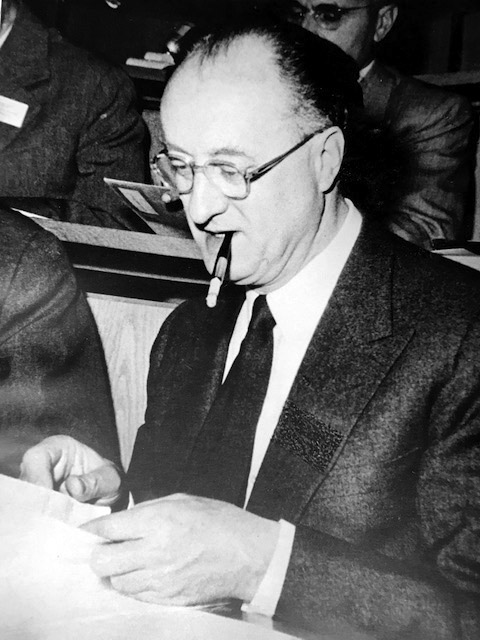Hans von Halban (1908-1964) was an Austrian physicist.
Being of Jewish descent, Halban left Austria in 1935 to avoid persecution by the Nazi regime. He joined nuclear physicist Niels Bohr in Copenhagen, where he and Otto Frisch discovered that heavy water had very little neutron absorption compared to normal water. In 1937, he travelled to France and joined the research team of Dr. Frederic Joilot-Curie at the College de France. In 1939, the research group discovered the possibility of creating nuclear chain reactions, two months after the splitting of the atom.
In 1940, with the occupation of Paris on the horizon, Halban and his comrade, Dr. Lew Kowarski, fled to England with their research and a large supply of heavy water that the research team had received from Norway. In England, Halban continued his research at Cambridge, while working on the construction of British atomic piles. He was later assigned to a position in Montreal, creating the joint Canadian-British-French atomic pile at the Chalk River nuclear center.
For more information on Halban’s research before and during the war, listen to Lew Kowarski’s interview on Voices of the Manhattan Project.
Later Years
After the war, Halban returned to England and taught at Oxford University. He also led a team at the Clarendon Laboratory. In 1955, Halban returned to France to become a professor at the Sorbonne and to help direct the construction of a nuclear research laboratory just outside of Paris. That laboratory (the CEA Saclay laboratory) created the French nuclear bomb. Halban was in poor health during the last years of his life and died after a failed surgery in 1964.





